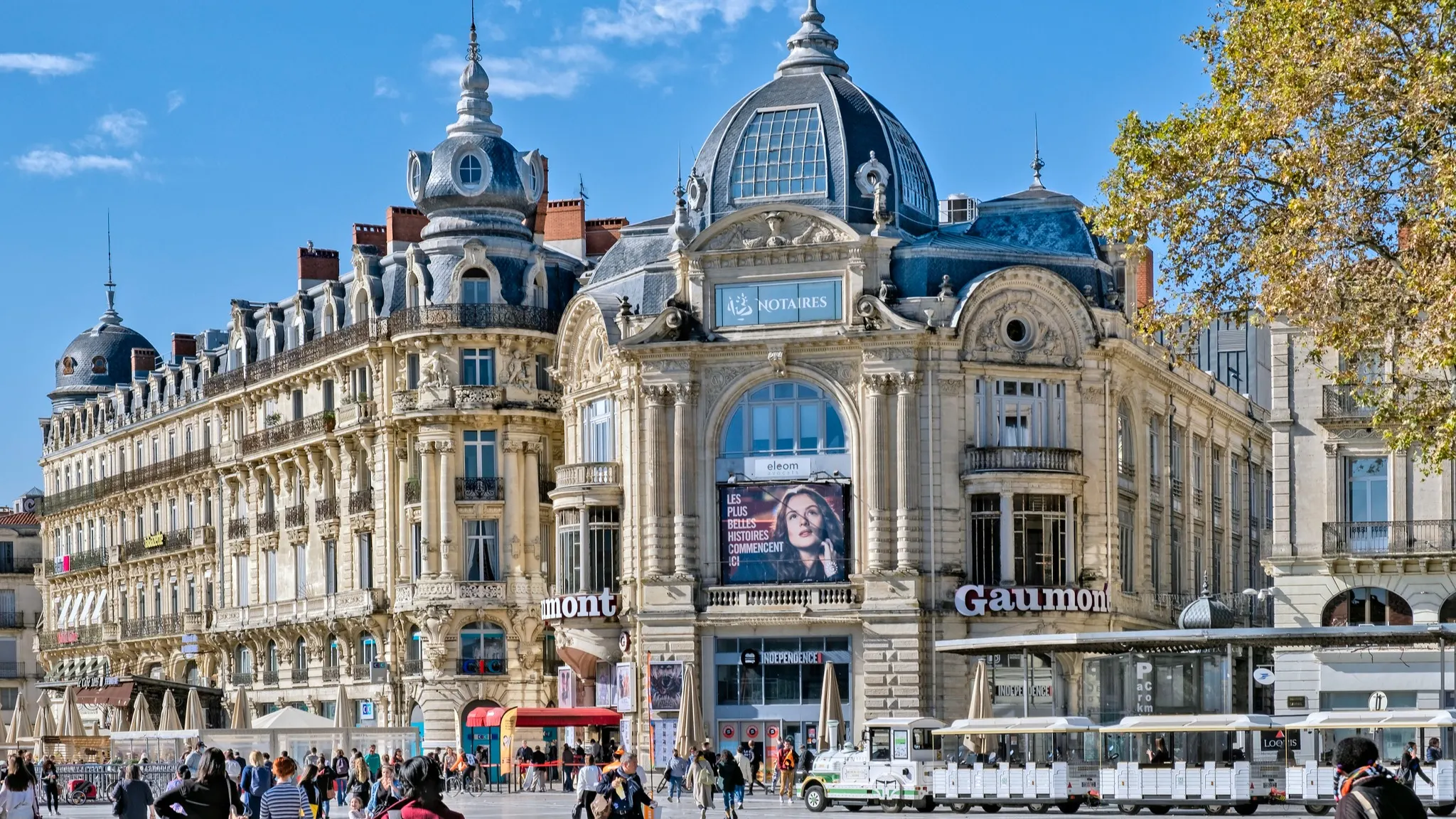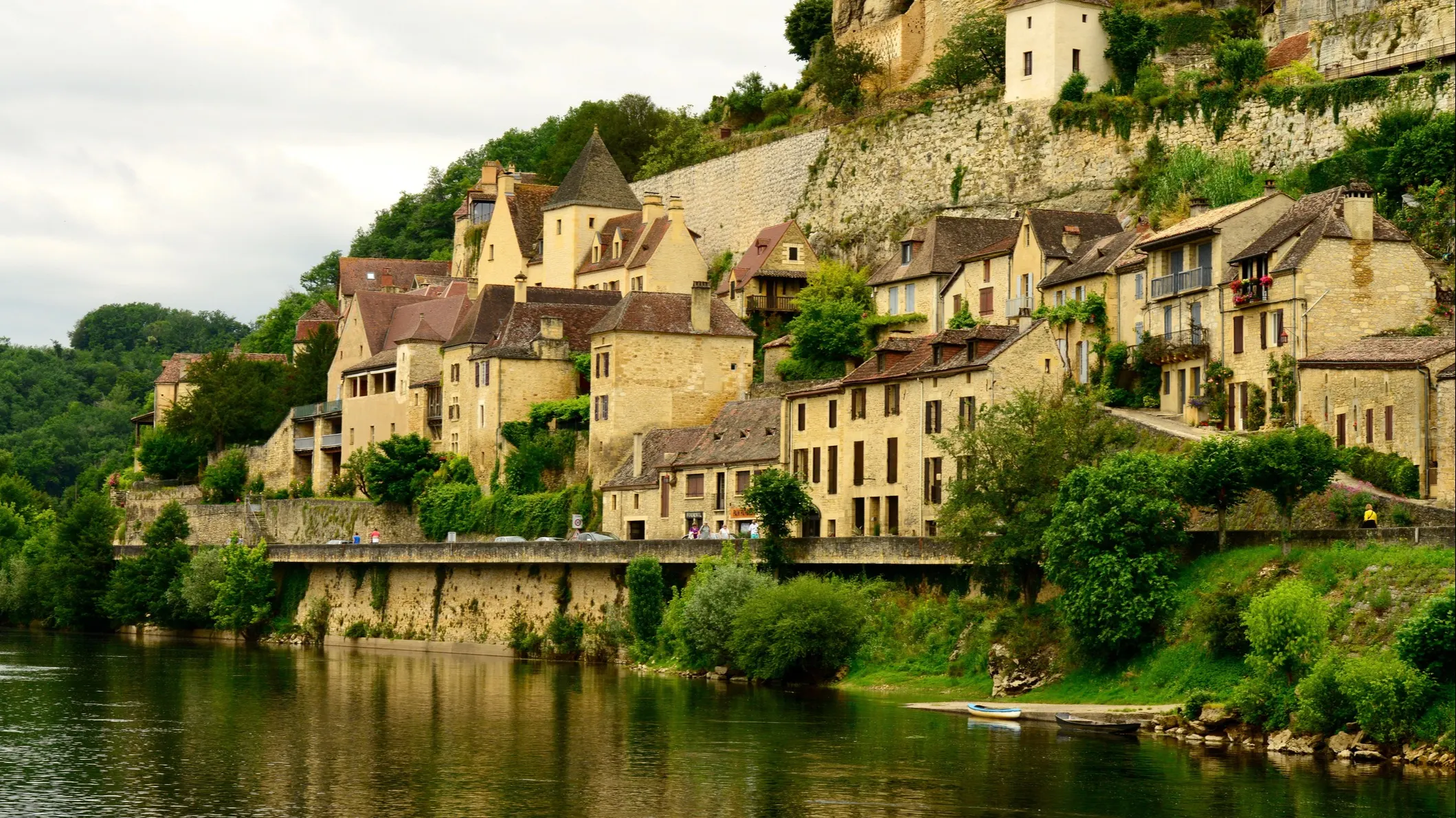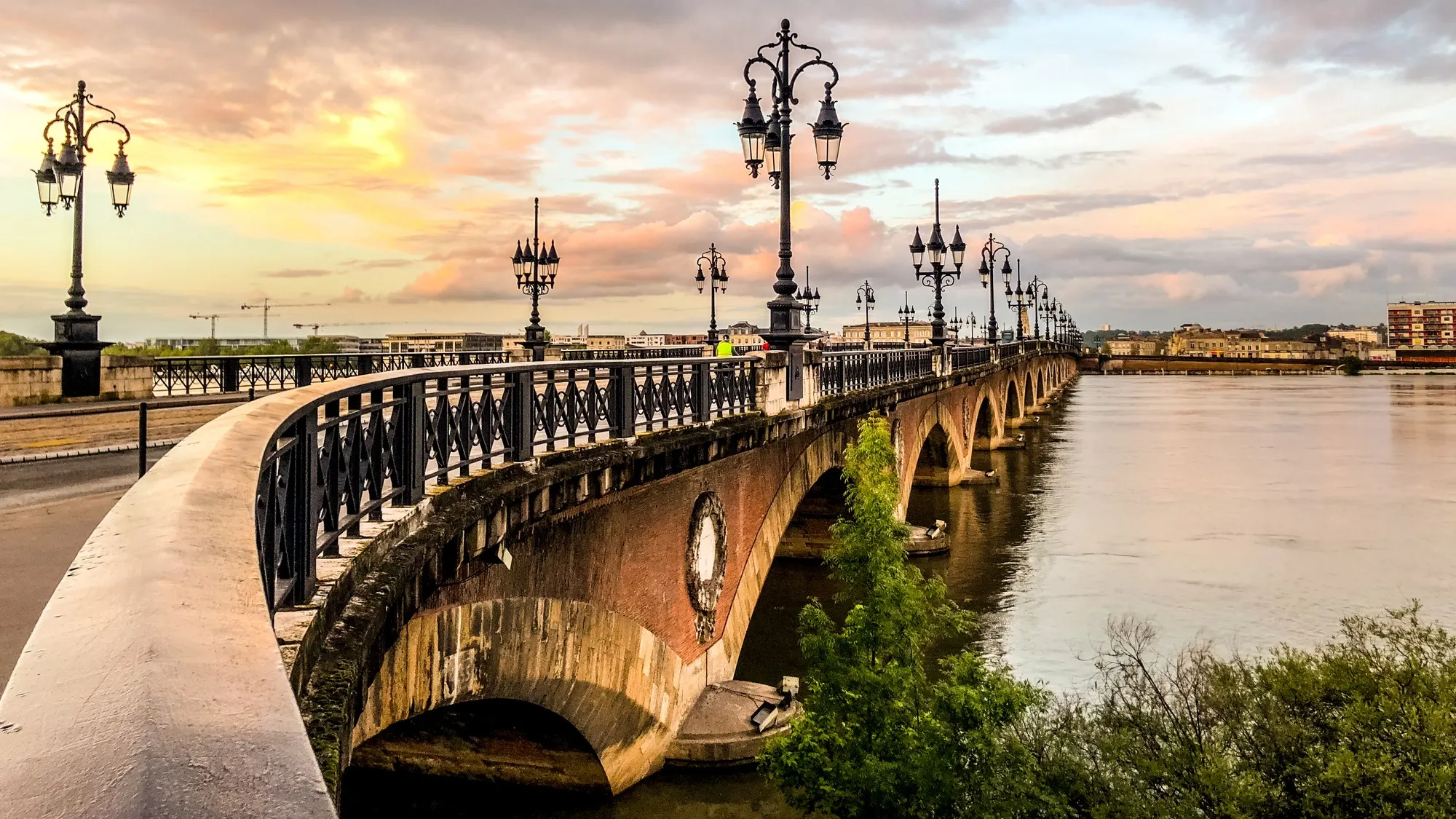France has all the ingredients that we at International Living look for in a retirement destination: a good climate, unspoiled countryside, top-notch culture, excellent healthcare, colorful traditions and history, and, of course, the glitter and sophistication of Paris. It’s not surprising that France is the world’s favorite tourist destination, receiving approximately 80 million foreign visitors each year.
But while the country’s capital may be beyond the budgets of many expats hoping to retire to France, there are still many towns and cities where day-to-day costs are less of a drain on the pocketbook, while still offering the best that living in France has to offer. If good healthcare, a relaxed lifestyle, and all the modern comforts you enjoy at home are among your top priorities, then France should be on your radar. Below are five of the best cities and towns in France for good-value living.
1. Lyon

Filled with beautiful 18th-century buildings painted peachy yellows, orange, and pinks, and graced with not just one, but two wide rivers, Lyon, located in the Rhône-Alps region of southeastern France, has a mellow, almost languid, vibe. With a half million people, it’s the third largest city in France. But walking around, you don’t feel the weight of these people. Even in the very heart of the city, there’s a sense of space. This is likely because Lyon has numerous generous squares, wide streets, and parks, not to mention two enormous hills that provide amazing vistas that can reach as far as the Alps on a clear day.
Lyon also has all the advantages and liveliness of a big city. With museums, theaters, galleries, cafés, boutiques, and an extensive transportation system to deliver you to them all, there’s never a shortage of things to do. On top of this, rental prices here are a steal, especially when compared to those of Paris. An unfurnished, one-bedroom apartment in Lyon’s center is likely to cost you $910 per month, while a two-bedroom apartment in one of the city’s “chic” neighborhoods will set you back just under $1,400 per month.
And lastly, there’s the food. Lyon is probably best known for being the gastronomic capital of France. Excellent food is Lyon’s tradition, culture, and lifeblood. Millions visit here every year in search of the best meal of their life. With so many quality restaurants around, it’s easy to find a marvelous three-course meal in Lyon for about $30 or even less. The only problem is that you often stagger away from the table swearing that you’ll never eat again. IL contributor Barbara Diggs says, “When in Lyon, be sure to eat traditional food in a bouchon. A bouchon is a tavern-style restaurant that once served the silk workers that populated the city in the 16th and 17th centuries. While the city has many excellent bouchons, the Comptoir Abel has the reputation of being the most authentic, it’s been serving up meals since 1928.”
2. Montpellier

Located on the warm, sunny, southern coast of France, Montpellier is in the Languedoc Roussillon region, happily nestled between the Cévennes mountain range and the Mediterranean Sea. The city is France’s eighth largest and fastest-growing, with a population of about 253,000, of which around 70,000 are students. Home to the first and most famous medical school in France, Montpellier is known as a university town and embodies all the liveliness and energy you’d expect. In the historic center, the city’s wide boulevards are peppered with cafés, restaurants, and bars, and play host to a range of annual cultural events, from flamenco exhibitions to international film festivals, to jazz concerts.
Art lovers will treasure the city’s numerous galleries and museums, including the famous Fabre museum, known for its impressive collection of 17th- to 19th-century European art. Montpellier is home to several universities, including one of the world’s oldest medical schools (founded in 1220), where both Nostradamus and Rabelais once studied. The tramway system is excellent, as is the bus system.
And for the environmentally conscious, Montpellier is also bike-friendly, offering more than 90 miles of bike paths throughout the city, and even six miles of bike paths that lead directly to the beach. “Real estate prices are also reasonable, considering the city’s broad range of amenities and its location near the sea,” says Barbara Diggs. “I saw local real estate agents listing unfurnished one-bedroom apartments renting for $765 to $1,060 a month and two-bedrooms starting at $1,100.”
3. Sarlat-la-Canéda

Often known simply as Sarlat, this town with a population of about 11,000 is in the center of the Dordogne region of southern France. Sarlat offers big-city convenience and activities, packaged in a small-town setting, that makes it a delightful location to visit and a wonderful place to call home. Narrow streets occasionally interrupted by quiet squares meander through the historical center, bringing to mind the romantic images of small-town France. Caves with pre-historic paintings, castles guarding nearly every hilltop, and rivers quietly winding through forested valleys, draw visitors to the area.
There’s more to Sarlat than the medieval architecture and quiet lanes though. Whether you are canoeing the rivers, biking along the country roads, or climbing the limestone cliffs, it’s easy to be active here. The Summer Theater Festival, Fall Film Festival, and Holiday Music Festival showcase the cultural side of Sarlat. The Cultural Center offers exhibitions and performances throughout the year. The local cuisine is as outstanding as the setting. The area is famous for truffles and their delicate yet musky flavor accents many local dishes. Goose, duck, and foie gras are favorites in many of Sarlat’s restaurants.
While prices have increased in recent years and cheap restorable structures are harder to come by, village homes can be found in the $200,000 to $350,000 range, while renting a two-bedroom apartment is likely to cost you $565 a month. Sarlat is far enough from large cities to provide a quiet, small-town life, but it is also situated within easy reach of the major cities of southwest France. Bordeaux and Toulouse are each about two hours away by car.
Get Your Free France Report Here
Get Your Free France Report Here
Learn more about France and other countries in our daily postcard e-letter. Simply enter your email address below and we’ll send you a FREE REPORT: A Taste of France: All the Ingredients for the Good Life.

By submitting your email address, you will receive a free subscription to IL Postcards and special offers from International Living and our affiliates. You can unsubscribe at any time, and we encourage you to read more about our Privacy Policy.
4. Bordeaux

Paris might be the crown jewel of France, but the city of Bordeaux is a glittering diamond in its own right. This ancient city, in the famous wine-growing region of southwest France, has experienced a dramatic renaissance in recent years. Thanks to its beauty and history, much of the city has been designated a UNESCO World Heritage Site. And Bordeaux is a wine lover's paradise, with everything from world-famous estates to small cellars barely known outside of France. Situated on the Atlantic coast, Bordeaux is close to over a dozen gorgeous sandy beaches. Beaches around these parts tend toward the naturally wild side, with scrubby pines, marshes, and large dunes. Hourtin Lakeside Beach is a natural clear-water lake that happens to be the largest freshwater lake in France.
The weather in Bordeaux tends to be pleasantly mild, getting neither particularly hot in summers nor particularly cold in winter. Average temperatures in July, for example, reach only about 70 F (although the highs are about 79 F), while the average low in December is 43 F.
“Bordeaux offers good value for money compared to Paris,” says Barbara Diggs. “It's a nice alternative to the high prices of the capital, if you want to be in a city in France. The real savings kick is if you’re there long-term. You can find furnished properties of 700 square feet to rent in the center of the city for around $1,800 to $1,900 a month. It'll be less the further you are away from the pretty center.”
5. Pau

If you are looking for a retirement option that really delivers, consider Pau—a beautiful French city of 80,000 a few miles from the Spanish border. Gorgeous old villas and mansions line the streets, taking in spectacular views of the snow-capped Pyrenees. Pau has mild, wet winters with mild, warm summers. In summer the average temperature is 68 F to 86 F, while in winter you can expect around 54 F. With such a climate, it’s easy to see why European nobility flocked to the city for vacations in the 19th and early 20th centuries. Its location lends itself to the best of both worlds—the nearest ski resorts are only 45 minutes’ drive and you can be at an Atlantic beach in an hour. The city has easy access to hiking, climbing, and cycling. Pau is second to only Paris when it comes to hosting stages of the Tour de France.
The city is known for its interest in sports and boasts the first 18-hole golf course created in Europe, which you can still play today. It has a Victorian-style clubhouse with a distinctly British atmosphere. It would not be France without a local wine, and Pau is famous for Jurançon, which is produced in only 25 towns and villages. The moelleux (sweet) white wine is the most famous, however they also produce a dry one. But when it comes to essential facilities, Pau has an excellent hospital and other health centers, an airport with connecting flights around the world, and the TGV (Train Grand Vitesse) trains that run to places like Paris, Bordeaux, and Toulouse.
“You will find that property prices are very reasonable when compared to the States, but by French standards are higher than those of cities of similar size,” says Stewart Richmond, IL’s South of France Correspondent. “As Pau is a university city, buy-to-let apartments—especially one-room studios—are popular investments. If you want to buy a full-time retirement home, expect to pay around $240 per square foot but you can buy apartments for under $18 a square foot.”
Get Your Free France Report Here
Get Your Free France Report Here
Learn more about France and other countries in our daily postcard e-letter. Simply enter your email address below and we’ll send you a FREE REPORT: A Taste of France: All the Ingredients for the Good Life.

By submitting your email address, you will receive a free subscription to IL Postcards and special offers from International Living and our affiliates. You can unsubscribe at any time, and we encourage you to read more about our Privacy Policy.
Related Articles
Moving to France Will Be the Best Move You’ve Ever Made
